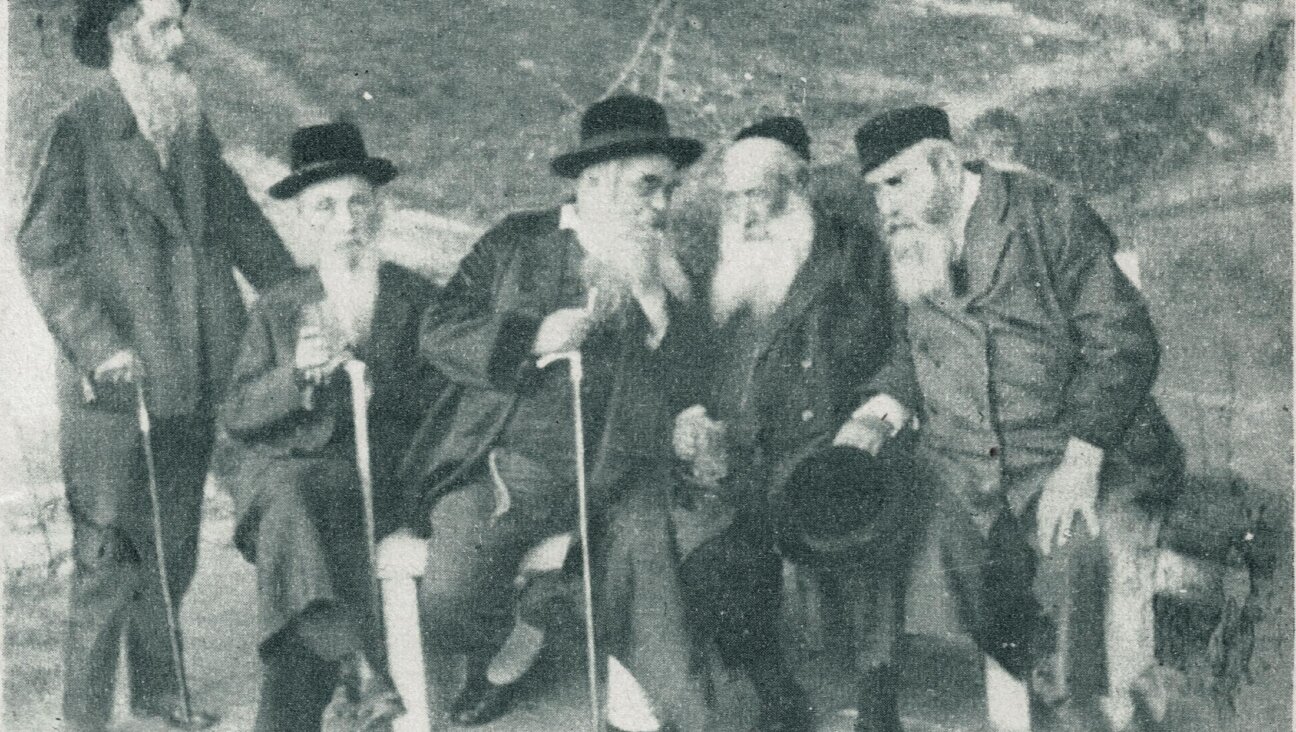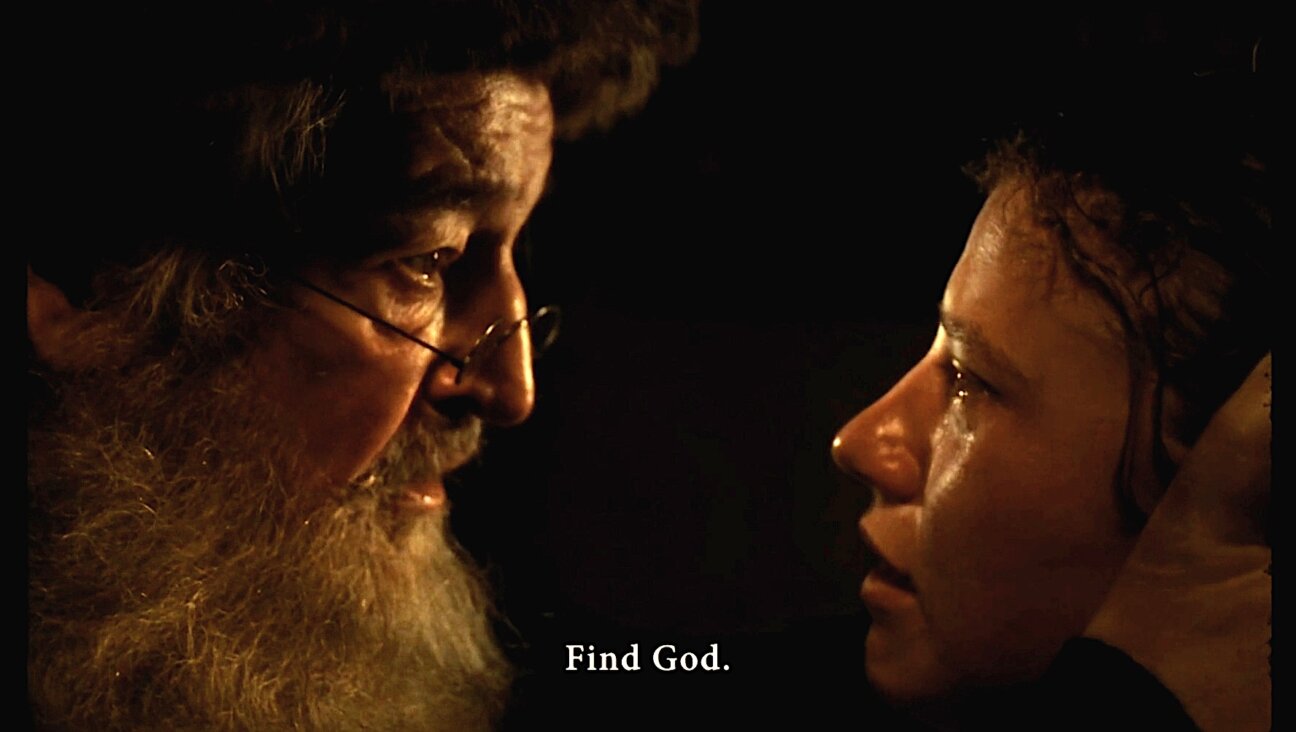Recalling The Unsavory Characters Of Jewish History, From ‘Prophets’ To Murderers

This article originally appeared in the Yiddish Forverts.
Bad Rabbi: And Other Strange but True Stories from the Yiddish Press
By Eddy Portnoy
Stanford University Press, 280 pages $15.25
When the study of Jewish history began in the 19th century, it had two goals: To create an objective picture of the Jewish past and to defend the Jewish people from all sorts of anti-Semitic libels.
But not all historical facts and circumstances portrayed Jews in a positive light, so earlier generations of Jewish historians were careful not to accentuate the flaws of Jewish society, especially when writing in non-Jewish languages. That’s why, until recently, all that‘s been available has been the “sanitized version”.
The Yiddish press had an entirely different approach. They didn’t worry what the “goyim” would say. More important to them was to report the sensational — in short, to sell papers. Only in the last few decades have Jewish historians begun researching the less attractive side of Jewish life throughout history, specifically its unsavory elements.

An important contribution to this new approach is Eddy Portnoy’s book, “Bad Rabbi: And Other Strange but True Stories from the Yiddish Press.”
Portnoy, Senior Researcher and Director of Exhibitions at the YIVO Institute for Jewish Research, is not only an expert in Jewish cultural history and the Yiddish press, but also a talented storyteller. Of course, his material itself makes for a suspenseful, lively lecture, but it’s Portnoy’s research and analysis that transforms the raw material into a true academic work. The author refers to the material from his research as the “flotsam of Jewish history:” The unsavory characters and events that resulted from the mass migrations of Jews into large industrial cities from the end of the 19th century through the beginning of the 20th. Portnoy obtained most of his material from the popular press of the day, published in the two largest Jewish communities of that time, those of Warsaw and New York.
The book opens with portraits of two colorful personalities who gained a certain notoriety in America. One is of a religious peddler named Pesach Rubenstein, who killed a young girl and whose trial shocked the nation. The second focuses on the Jewish spiritual leader Naftali Herz Imber, known as the author of “HaTikvah.” Imber arrived in America from Galicia and earned his reputation through his mystical prophecies. In Los Angeles in 1897, for example, he predicted the establishment of a Jewish state in Israel within 50 years. A lover of all sorts of liquor, he also promised that Californian wine would someday be among the best in the world.
The self-styled “Professor” A. Hochman was another kind of “prophet,” who advertised himself as a “world-renowned fortune teller and mind reader.” His specialty was finding men who had abandoned their wives. His success in this field encouraged him to offer his help to New York gangsters and politicians. In the end, he found himself more gainful employment in real estate.
Jewish life in Warsaw was no less sensational. In both cities, Jewish anarchists and socialists agitated against religion. A group of heretics in New York demonstratively attended parties and restaurants on Yom Kippur and got into brawls with religious Jews. Anti-religious propaganda was often spread through the secular Yiddish press, as in a special issue of the Lodz monthly Fraydenker (Freethinker) in 1926, which sharply criticized the High Holy Days.
Portnoy’s selection of illustrations and translated reports from Yiddish newspapers is delightful. His chapters end with a sometimes macabre cleverness; in one sentence he encourages the reader to consider curious stories from a broader, historical perspective. For example, in February 1929, the Polish-Yiddish newspaper Nasz Przegląd announced a beauty contest for “Miss Judea.” The winner was a young woman name Zofia Oldak. For a while, she became a famous figure in the Warsaw Jewish circles, but her fate afterwards is unknown. “An octogenarian cousin of hers who lived near Tel Aviv said she couldn’t remember if Oldak went to Australia or to Treblinka,” writes Portnoy, dryly.
The Holocaust casts a dark shadow over the book’s Warsaw chapters. One of the most tragic stories is that of the famous Polish Jewish thief Urke Nachalnik, who was, heroically, among the first to organize resistance against the Nazis and was killed in the Otwock ghetto.
Thanks to Portnoy, the forgotten pages of the Jewish past have been given life. In this way, they contribute a colorful, lively element to our understanding of Jewish history.
A message from our Publisher & CEO Rachel Fishman Feddersen

I hope you appreciated this article. Before you go, I’d like to ask you to please support the Forward’s award-winning, nonprofit journalism during this critical time.
At a time when other newsrooms are closing or cutting back, the Forward has removed its paywall and invested additional resources to report on the ground from Israel and around the U.S. on the impact of the war, rising antisemitism and polarized discourse.
Readers like you make it all possible. Support our work by becoming a Forward Member and connect with our journalism and your community.
— Rachel Fishman Feddersen, Publisher and CEO






























